Shoyu Ramen
Typically simmered for hours, if not days, shoyu ramen can seem daunting. My adaptation has all of the flavor with wholesome ingredients and without the time commitment so you can make it at home.
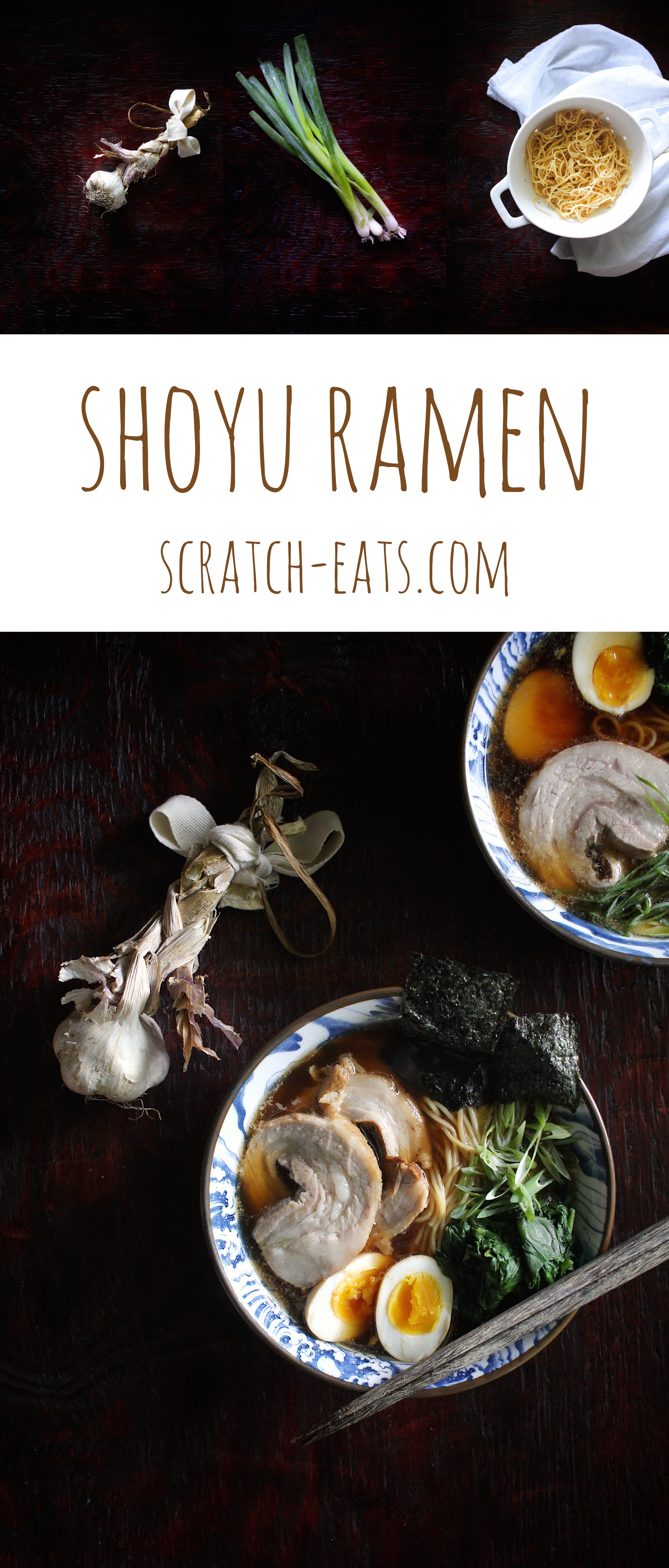
Growing up in Tokyo, I ate a lot of really, really good ramen. Every hole-in-the-wall ramen shop has a different style, flavor profile, toppings, but you can bet that pretty much every single one is going to knock your socks off with deliciousness. Ramen is a national favorite dish, and it’s definitely one of mine. It is truly one of the foods I miss and crave most about living in Japan, and I’m always on the hunt for good ramen here. And I’m usually disappointed.
No, no. I’m not talking about the cheap stuff you buy at the grocery store with the dry packet of MSG that you sprinkle into boiled water. That’s not just disappointing, it’s not even the same thing. Shoyu Ramen combines a rich and salty brothy soup with perfectly chewy alkaline noodles, topped with Tokyo classics like blanched spinach, green onions, cha-shu pork, soy sauce marinated soft to medium boiled egg (which I have a perfect, fool-proof method for down at the bottom), and nori. Of course there are all sorts of variations, but that’s the standard. You eat it while super hot to avoid compromising the texture of the noodles (soggy noodles are baaaad), and slurp like you mean it because the slurping brings in extra soup with the noodles (flavor) and extra air which cools the noodles and soup (please don’t burn your tongue. youch!) while entering your mouth. And it’s fun to break the rules of tradition and slurp your food, right? Come on, you know you want to.
But besides that, the flavor is just amazing. And I’m going to make it easier for you to make at home.
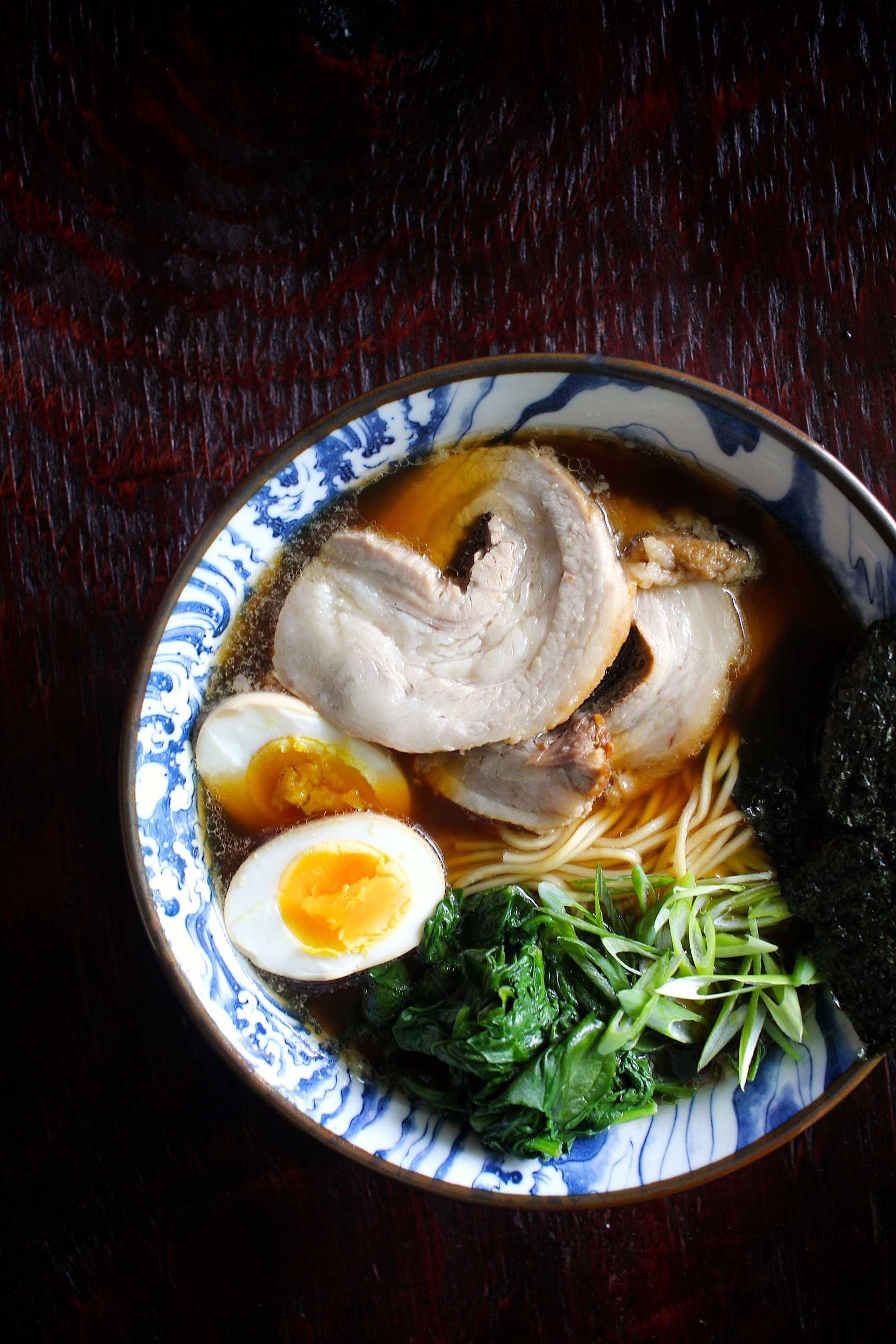
To save steps and prep, you simmer the pork belly (or shoulder, depending on your preference. Mine will almost always be pork bellyyyyyyyyy) and chicken together to make a magnificently flavorful broth and even better: juicy, tender, flavorful meat. You actually won’t be using the whole chicken in the finished dish. I pull it out and let it cool so I can shred it for something else later. If that seems ridiculous to you, go ahead and just add chicken bones instead of the whole bird.
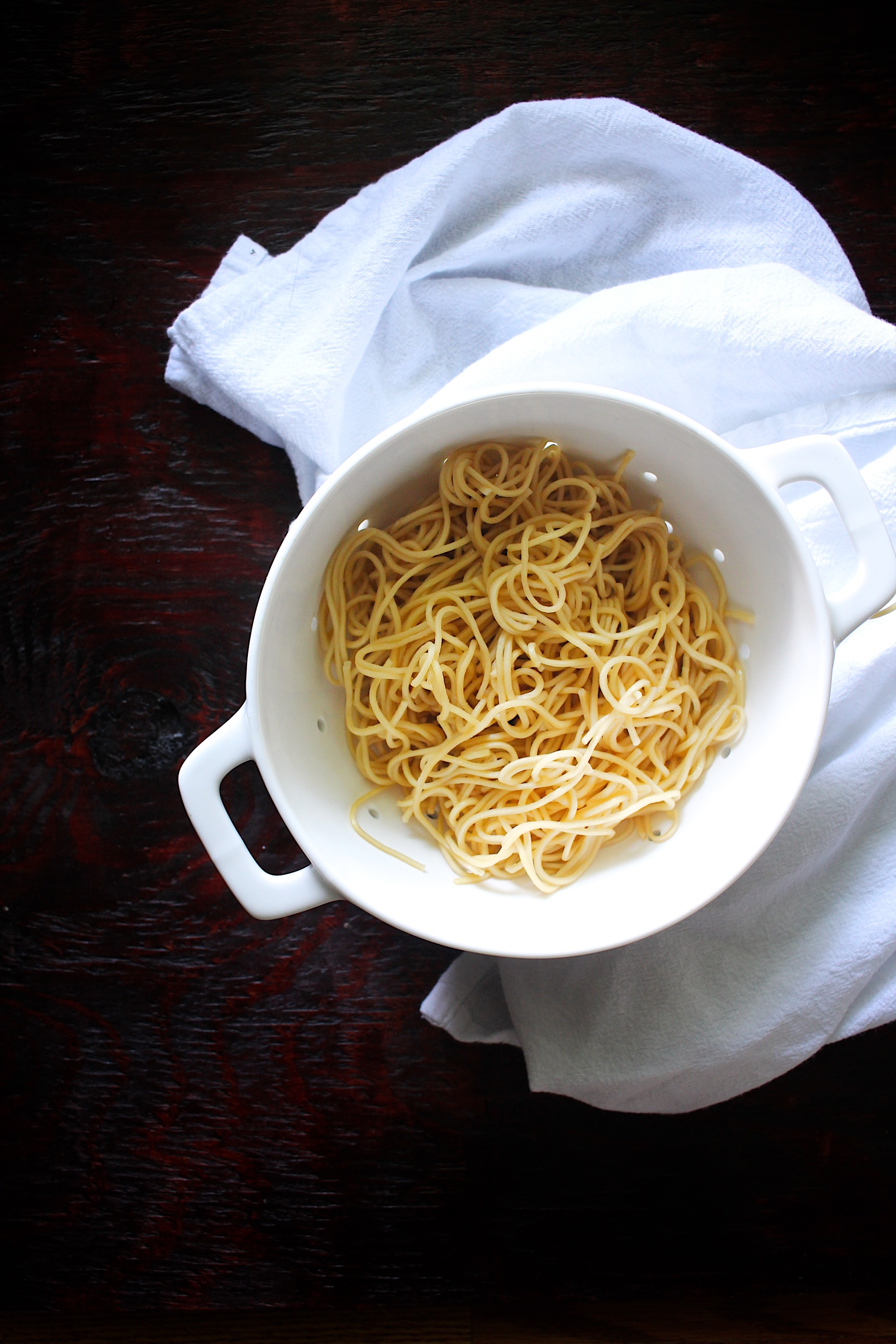
Let’s talk about noodles for a second. These aren’t quite like Italian pasta, and absolutely nothing like packet ramen. They’re made with “kansui” which is potassium bicarbonate & sodium bicarbonate which alkalizes them, and that gives them their distinct chewy texture and yellow color. A lot of purists say you need to use fresh-frozen noodles from the Asian market, and I used to agree. But then I started reading the ingredient lists on those and I took a break from ramen for a while, not knowing what else to do. Now I use these noodles (not sponsored), and they are awesome! They cook up with the perfect texture, and are just in between the super thick and super thin camps of noodles, so everyone can enjoy them.
When it’s time to serve, use a large bowl, keep everything piping hot, and layer every ingredient in the right order. First taré (the really strong sauce that flavors the stock), stock, noodles, then everything else in a pretty circle.
Enjoy!
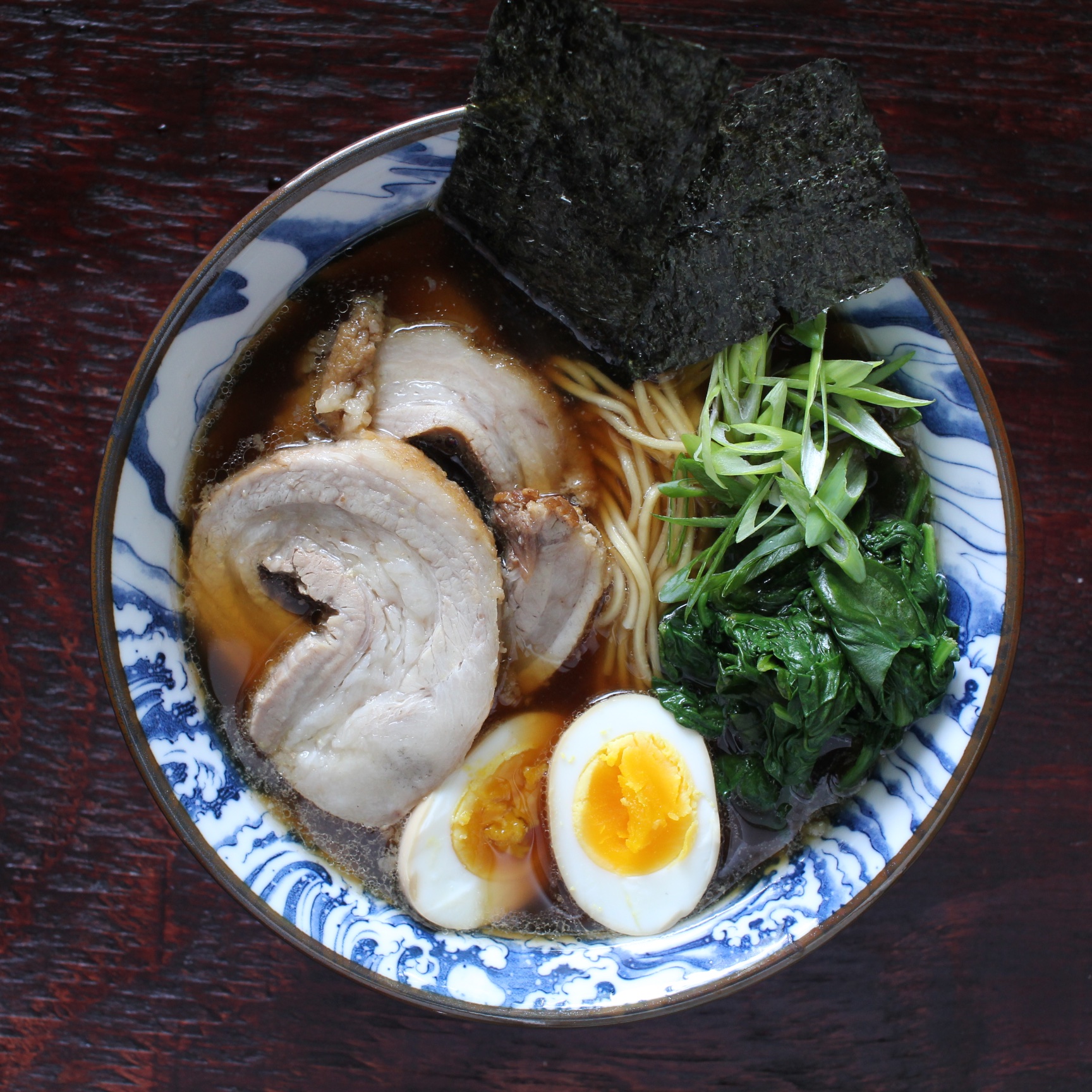

- 1 whole chicken
- ½ ounce ginger
- 2 cloves garlic, peeled and crushed
- 2 pounds fresh pork belly (roll it as tightly as you can and tie it to hold it in a cylinder)
- 3 quarts water, plus more as needed
- 1 scallion
- 1 carrot
- 1 tablespoon neutral tasting oil
- 1 cup water
- 1 cup soy sauce
- 3 tablespoons pure maple syrup
- 2 cloves garlic, peeled and grated
- 2 scallions, minced
- 1 ounce ginger, grated
- 4 soft~medium boiled eggs (recipe on separate recipe card)
- 1 cup soy sauce
- 2 tablespoons pure maple syrup
- 2 cloves garlic, grated
- 1 scallion, minced
- ½ ounce ginger, grated
- 1/2 lb baby spinach
- 1 9.5 ounce package dried ramen noodles
- 2 quarts ramen soup
- 4 prepared Ajitama
- prepared chashu pork
- 4 sheets nori
- 2~3 scallions, trimmed and thinly sliced on the bias
- Heat a large, heavy-bottomed stock pot over high heat and add oil. Brown the pork belly on all sides. Add all of the other ingredients to the pot and bring to a boil. When the liquid boils, reduce the heat to medium and let simmer uncovered. Skim off any scum that rises to the surface and discard. Simmer for about 2 hours, until the soup reduces to 2 quarts. Remove the pork belly and set aside for chasu, and remove the chicken and reserve for another use. Strain the stock through a fine mesh strainer, and discard solids.
- Add all of the ingredients for the soy sauce marinade to a saucepan and bring to a boil over high heat. Immediately remove from the heat and allow to cool to room temperature.
- Pour the soy sauce marinade into a glass loaf pan and place the cooled pork belly and 4 eggs. Let marinate for 30 minutes up to an hour, rotating the pork and the eggs periodically to make sure all sides are getting marinated. Remove from the sauce and set aside.
- Combine the taré ingredients in a bowl and stir to combine. Set aside.
- To prepare the spinach, bring a small saucepan with 1 inch of water to a boil over high heat. Add the spinach and blanch for about 45 seconds~1 minute. Immediately drain and run cold water to stop the cooking. Once cool enough to handle, squeeze the spinach so remove excess water. Set aside.
- Cook the noodles according to package directions.
- Meanwhile, Reheat the stock. Separate the spinach into 4 equal portions and slice each egg in half. Cut the string off of the chashu and slice as thinly as you can. Add 1/4 cup of the taré to each of the 4 ramen bowls. Pour roughly 2 cups of the stock into each bowl, and then add about 1/4 of the cooked noodles. Arrange 2 egg halves, 1 potion of the spinach, 2~3 slices of the chashu, scallions, and 1 piece of nori in a circle around the noodles. Serve immediately.


- 8 large eggs*
- water
- Fill a medium saucepan with about 1 inch of water. Cover with a lid and bring to a boil over high heat. Once boiling, carefully but quickly add the eggs. Cover and immediately set a timer.
- 6 minutes 30 seconds for soft boiled eggs. (completely runny yolk)
- 7 minutes 30 seconds for medium-soft boiled eggs. (thickened but runny yolk)
- 8 minutes 30 seconds for medium boiled eggs. (edges of the yolk are starting to be solid)
- 9 minutes 30 seconds for medium-hard boiled eggs. (yolk is cooked through but still dark yellow and smooth)
- 10 minutes for hard boiled eggs. (yolk is completely cooked though, but no gray ring)
- Once the timer goes off, immediately run under cold water (or better yet, immerse in ice water) until the egg is no longer warm to the touch. Place in the refrigerator for later use or use immediately.
- To peel, gently crack the shell all around the egg and start from the bottom. Peel under running water.
- * This method really works for any number of eggs. Just make sure they fit in the pan in one layer. And don't use extra large eggs, it will alter the cooking time.


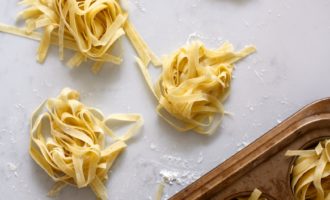
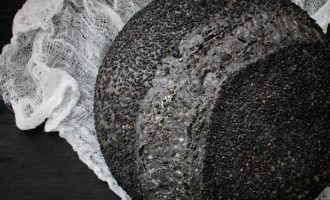
Be the first to comment.